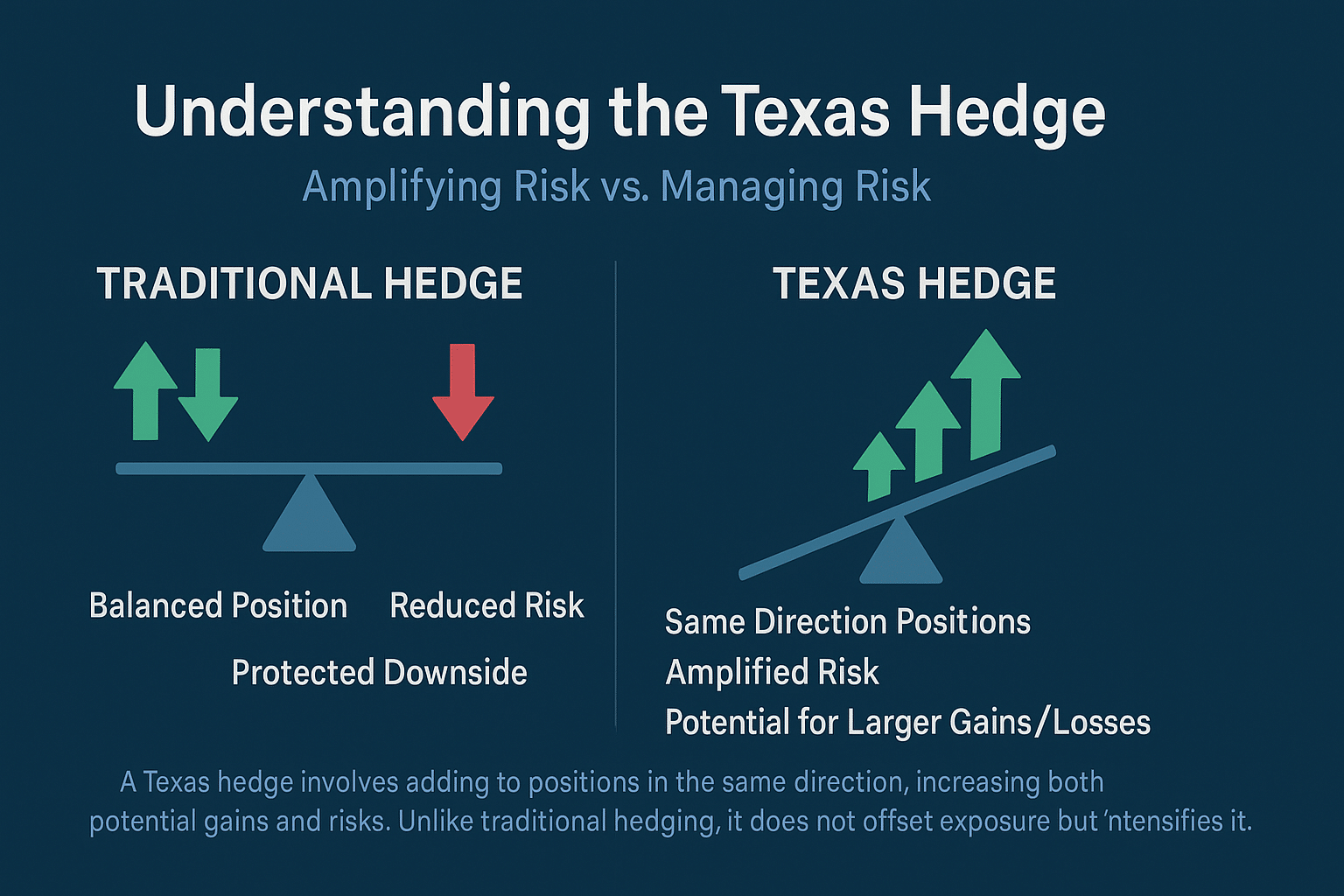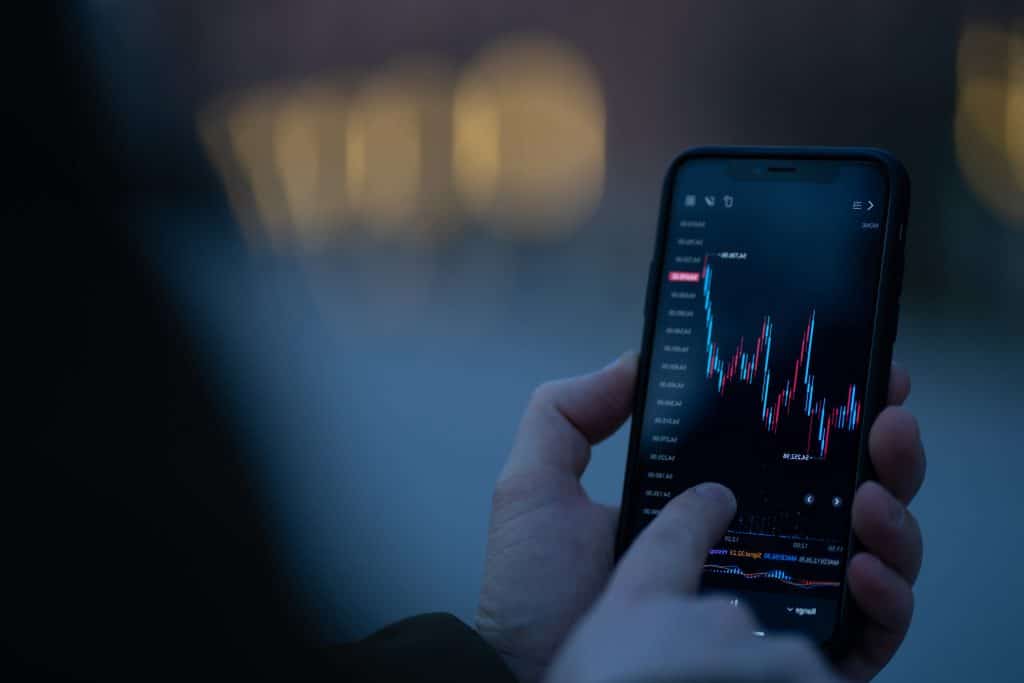Texas Hedge
Texas Hedge: When Hedging Makes Risk Worse


By Billy Ribeiro | Globally Recognized Trader & Market Strategist
Billy Ribeiro is a globally recognized trader renowned for his mastery of price action analysis and innovative trading strategies. He was personally mentored by Mark McGoldrick, famously known as “Goldfinger,” Goldman Sachs’s most successful investor in history. McGoldrick described Billy Ribeiro as “The Future of Trading,” a testament to his extraordinary talent. Billy Ribeiro solidified his reputation by accurately calling the Covid crash bottom, the 2022 market top, and the reversal that followed, all with remarkable precision. His groundbreaking system, “The Move Prior to The Move,” enables him to anticipate market trends with unmatched accuracy, establishing him as a true pioneer in the trading world.
Connect with Billy: LinkedIn | X (Twitter) | YouTube
What Is a Texas Hedge?
A Texas hedge is a trading action where, instead of offsetting risk like a traditional hedge, the trader takes on additional risk in the same direction. It’s a phrase rooted in humor and irony because it does the exact opposite of what hedging is meant to do.
While a traditional hedge involves protecting a position by taking an opposing side (e.g., buying puts to protect long stock), a Texas hedge is like being long a stock and then buying call options—doubling down on the bullish bet instead of reducing risk.
Common Examples of a Texas Hedge
- Stock + Call Options: A trader owns 1,000 shares of $AAPL and, instead of buying protective puts, buys 10 at-the-money call contracts, adding even more bullish exposure.
- Doubling Down on Futures: A commodity trader is long crude oil futures. As prices rise, instead of taking partial profits, they double their position size.
- Leverage Stacking: A trader is already in a leveraged ETF (like TQQQ) and then opens another leveraged position in the same direction, amplifying volatility and risk exponentially.
The Psychology: Why Do Traders Do This?
A Texas hedge is rarely a sound strategy, but traders fall into this trap due to powerful psychological biases:
- Overconfidence Bias: A strong belief that a market read is infallible, leading a trader to press their bet aggressively.
- Fear of Missing Out (FOMO): Watching a position move favorably and adding to it out of fear of leaving profits on the table.
- Gambling Mentality: A “go big or go home” approach, where the focus is on hitting a massive win rather than on consistent risk management.
Billy’s Take:
“A Texas hedge is the opposite of professional trading. Pros focus on capital preservation first; this strategy puts capital preservation last. In my experience, it’s almost always a symptom of emotional decision-making—greed or overconfidence—taking over a sound trading plan. There are rare, calculated moments for aggressive scaling, but that’s not what a Texas hedge is.”
Better Alternatives to the Texas Hedge
Instead of compounding risk by doubling down, a professional trader manages a winning position by:
- Using Protective Puts: Hedging a long stock position with puts to protect against a sudden downturn.
- Setting Trailing Stops: Locking in profits as a trade moves in your favor without capping the upside.
- Reducing Position Size: Taking partial profits at pre-defined targets to de-risk the trade.
- Hedging with Inverse ETFs: Temporarily buying an inverse ETF (like SQQQ) to hedge a tech-heavy portfolio.
Conclusion
While the name “Texas hedge” sounds bold, it’s ultimately a cautionary tale about the dangers of poor risk management. It serves as a reminder that the goal of hedging is to reduce risk, not to amplify it. True trading mastery comes from disciplined execution and capital preservation, two principles that a Texas hedge fundamentally ignores.
Continue Your Learning
Explore these related topics to build a complete trading education:
Elevate Your Trading Skills
Ready to master professional risk management? Join our community for in-depth education, live sessions, and expert analysis of how to build a winning strategy. Sign up today to start trading with a real edge!
Frequently Asked Questions (FAQ)
Q: Is a Texas hedge the same as “averaging down”?
A: No. Averaging down is adding to a *losing* position in the hopes it will recover. A Texas hedge is adding to a *winning* position, but in a way that increases risk instead of managing it.
Q: Is it ever a good idea to use a Texas hedge?
A: In most professional contexts, no. A disciplined trader scales into positions with a pre-defined plan, whereas a Texas hedge is often an impulsive, emotional decision that abandons risk management principles.
Q: How can I know if I’m accidentally creating a Texas hedge?
A: Before adding to any position, ask yourself one question: “Does this new position reduce my overall risk, or does it multiply it?” If the answer is “multiply,” you are likely creating a Texas hedge.
Get Actionable Insights Direct to Your Inbox
Want more market analysis and trading strategies like this one? Join our free weekly newsletter for professional-grade content delivered straight to your inbox.
CRITICAL: Trading involves substantial risk of loss and is not suitable for all investors. The content of this article is for educational purposes only and is not a recommendation to buy or sell any security. All trading strategies are used at your own risk.






